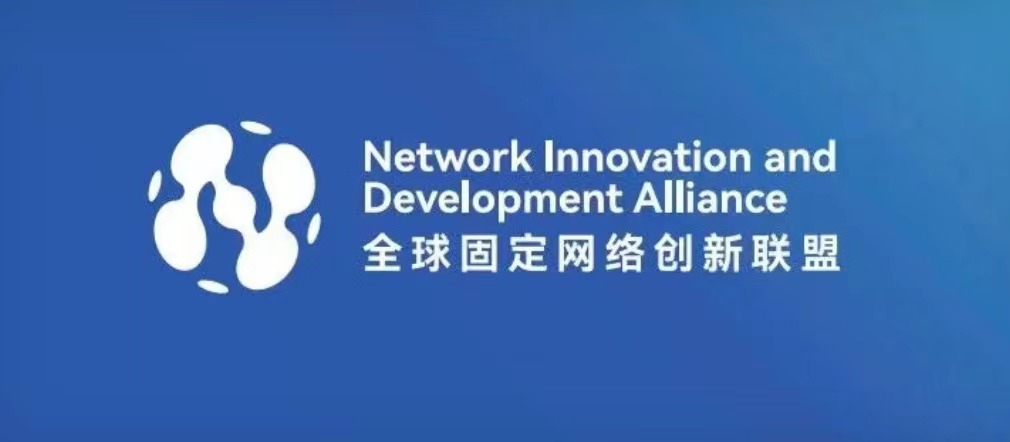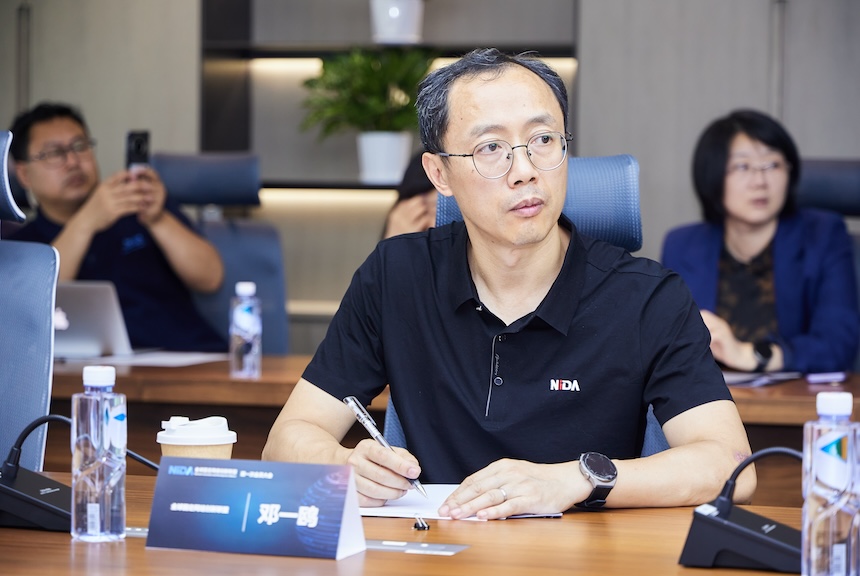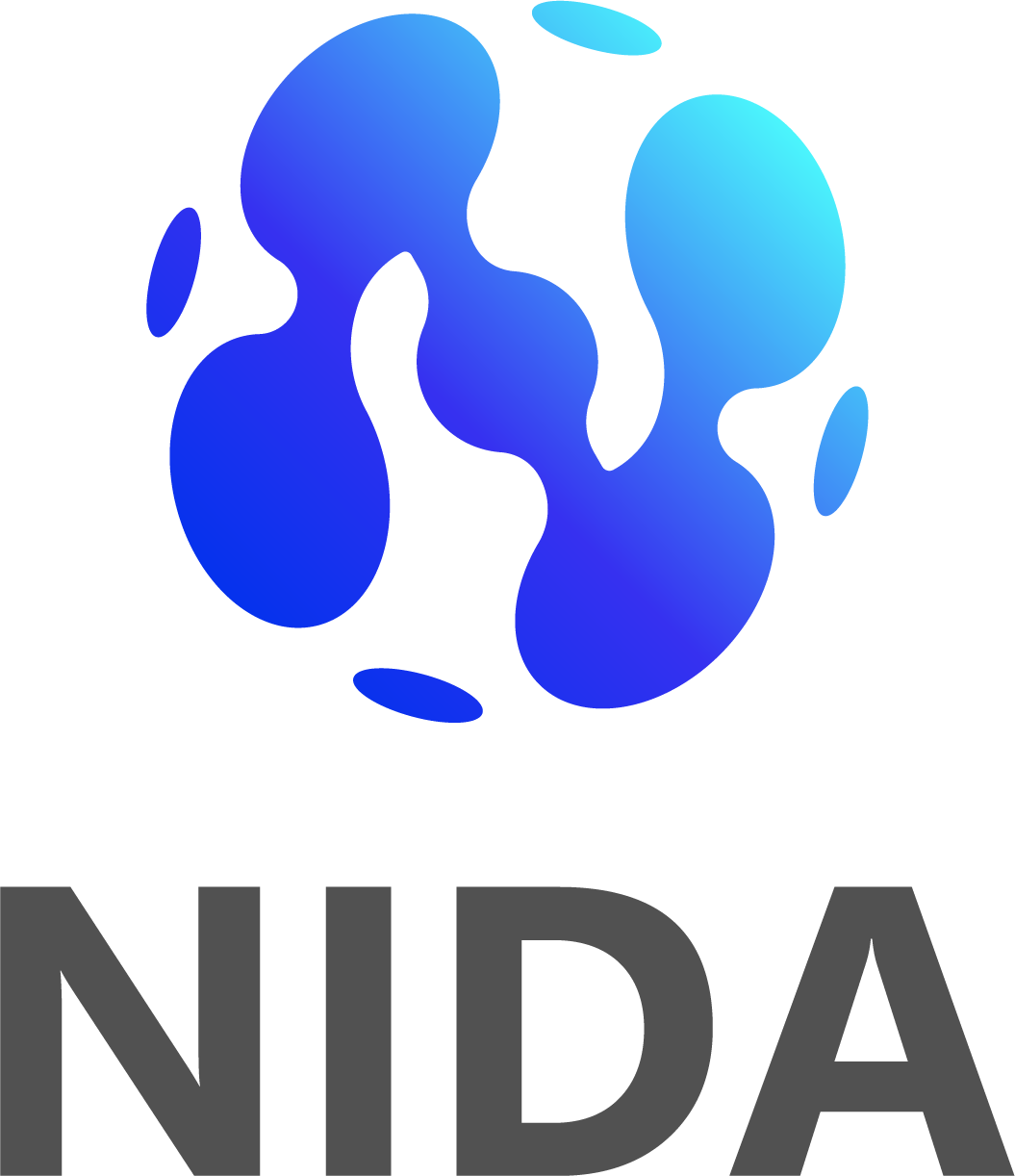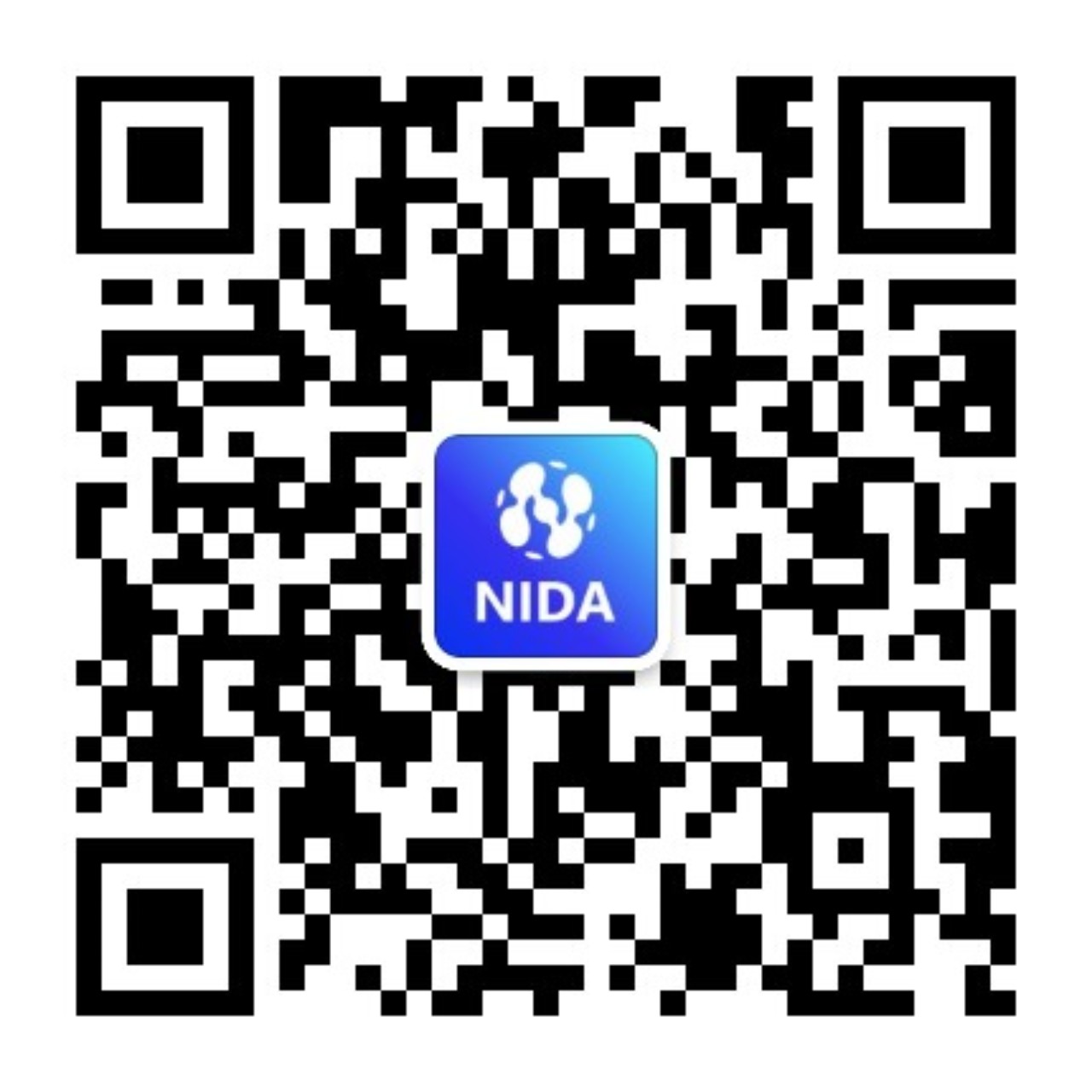Interpretation of the Design Connotation of NIDA Logo
The Global Alliance for Fixed Network Innovation (NIDA) last year upgraded and designed a brand new logo. The new logo is not only a visual language reshaping, but also a profound expression of the brand's core value and future strategic direction. The following is a detailed explanation of the logo design:01 Continue the brand gene, inherit and innovate at the same timeNIDA's original logo is based on four letters, using positive and negative spaces to create a visual effect of the light of technology between "i" and "D". The design embraces the spirit of innovation and the future, while using a cross-shaped metaphor for local close-ups of network connectivity, delivering the brand concept of connectivity and high-speed broadband experience. In designing the new logo, we continue the essence of the brand's genes, ensure that its core concept is passed on, and incorporate more dynamic and open elements to meet the rapidly evolving industry ecosystem and global market needs.02 Liquid form: A symbol of dynamics and flexibilityThe main body of the new logo is designed in an organic liquid form. This design language not only symbolizes the fluidity of data, but also embodies the dynamic nature of information transmission and the real-time nature of network connection. This sense of fluidity shows the nature of the network moving freely in the multi-dimensional space, but also implies the adaptability and flexibility of NIDA in the face of the rapidly changing industrial environment.This concept, which breaks through the traditional linear design, not only shows the dynamic interaction of data flows on the network, but also reflects NIDA's leading position in the "new Internet" experience upgrade: faster connections, smarter networks, stronger security, and wider application scenarios.03 Globalization of the Network: Dots and lines construct three-dimensional "N"Another key design highlight of the new logo is the combination of dots and lines to create the three-dimensional letter "N" on the surface of the sphere. This design not only directly reflects NIDA's brand identity, but also conveys its openness as a global international alliance through visual language.The three-dimensional "N"-shaped structure conveys multiple meanings: Open organizational structure, standardization capability for global industry promotion, and flexible coverage capability for various scenarios This design language contains deep meaning in conciseness, and presents complex information through concise graphics, which not only facilitates identification, but also enhances the international image of the brand.04 Key points: Convergence of technologies and servicesWhen designing the letter "N", we specially incorporated the core business of NIDA - the innovative exploration of four scenarios: joint computing, joint intelligence, joint data, and joint air. These four key points run through the four technical directions of the new Internet:New • ultra-broadband connections: Faster network speeds and more stable connections.•IPv6+ New Extensions: Promote the upgrade and wide application of network protocols.New intelligence in • networks: Efficient allocation and optimization of network resources through intelligent technology.New • security mechanism: Build a more advanced and reliable network security protection system.By integrating these technical directions, we hope to reflect NIDA's core path in the logo design and demonstrate its technical leadership and foresight in the new Internet field.05 Cooperation and openness: Ingenious integration of two-handed metaphorsIn the design, we cleverly incorporate two-handed metaphors to symbolize NIDA as an international alliance of openness and cooperation that connects global innovation forces to drive the advancement of network technology. This detail not only enriches the connotation of the graphics, but also adds a layer of humanistic concern to the logo.06 Blue Gradient: Wisdom and Modern Visual ExpressionIn the color selection, we choose the sapphire blue gradient, from deep blue to light blue gradient transition, not only convey the wisdom, trust and stability of the brand core values, but also endow the logo with a modern sense and vitality. Dark blue symbolizes professionalism and reliability, while light blue adds a touch of youthful innovation. This gradient color treatment not only enhances the brand's visual impact, but also provides strong support for its modern and international image.07 Stereo Design: Metaphors of Ascending Dimensional ThinkingAlthough the new logo is a graphic design, it creates a strong three-dimensional feel through the combination of dots and lines and flow patterns. This design approach not only enhances the visual impact, but also metaphorizes NIDA's upward thinking in the field of new Internet technologies: Comprehensive innovation from a single dimension to a multi-dimensional dimension and from a part to a whole. This concept of "upgrading dimension" is a true reflection of NIDA's continuous breakthrough in the industry and leading the future.08 The designer has something to say: Design enablement brand futureCo-entropy Service Center, as the design organization of the new logo of NIDA, hopes to inject new vitality and depth into the brand of NIDA through this brand-new logo. It is not only an update of visual symbols, but also a condensed expression of the brand's core values and future vision.With this new design, NIDA not only consolidates its position at the heart of global network innovation, but also conveys to the world its relentless pursuit of innovation, collaboration and technological excellence. We are confident that this logo will be an important milestone in the development of the NIDA brand and will continue to shine on the global stage of the future.Logo design organization: COMENTROPY INDUSTRY AND STANDARDS INNOVATION SERVICE CENTER
2025-06-06
36
NIDA Network Evolution WG: Exploring the Path to Future Networks
Introduction to the Series Report:Working Groups (WG) are the engine driving the development and implementation of international standards, pooling the expertise of global specialists and using consensus to drive technical specifications and industry practices in specific fields. Within the Hetao International Organization Headquarters, dozens of working groups exhibit a vibrant landscape of high specialization and domain diversity. To overcome the inherent challenges of cross-regional and cross-time-zone collaboration, the digital collaboration platform AllianceHub plays a crucial role. Through integrated online tools, it streamlines communication and decision-making processes, enabling global experts to concentrate on core deliberations, improving the quality and value density of outcomes, effectively underpinning the efficient operation of the Hetao working group ecosystem, and establishing global innovation influence.NIDA Network Evolution Working GroupExploring the Path to Future NetworksAs a key component of the Network Innovation And Development Alliance (NIDA), the work of the Network Evolution Working Group is closely aligned with the alliance’s overarching mission. NIDA is dedicated to "defining the evolution path of global internet infrastructure, establishing network construction standards, and driving upgrades in data communication industries." The Network Evolution Working Group plays a pivotal role in achieving this vision. With intelligence becoming the dominant trend in societal development, industries across the board are accelerating their digital transformations. Future data communication networks must evolve from connecting people to connecting vast numbers of devices and objects, presenting unprecedented challenges to existing network infrastructures. Against this backdrop, the Network Evolution Working Group has assumed a central mission: to thoroughly explore and clearly define the overall evolution goals and roadmap for future data communication networks. This involves researching critical topics such as network generation segmentation, application scenario analysis, and architectural design, with the aim of providing clear guidance for the evolution of data communication networks to meet the diverse and high-quality demands of the intelligent era, thereby driving the sustainable and healthy growth of the entire communication industry.To effectively fulfill the responsibility of defining the evolution direction of future data communication networks, the Network Evolution Working Group brings together leading experts from China’s information and communication technology sector. Gao Wei from the China Academy of Information and Communications Technology (CAICT) serves as the chairman, while vice-chairmen and members include senior experts from core operators like China Unicom and China Telecom, leading equipment manufacturers such as Huawei, ZTE, and Centec, as well as specialized research institutions like the Jiangsu Future Network Innovation Research Institute. This diverse composition ensures that the working group’s discussions balance national-level strategic planning, practical network operational needs, cutting-edge technology R&D capabilities, and forward-looking research on future networks. It is this integration of industry, academia, research, and application expertise that lays a solid foundation for the working group to develop a forward-thinking yet practical network evolution roadmap, thereby strongly supporting the completion of its core mission.As Chairman Gao Wei emphasized: "Given the enormity of the challenges and the diversity of directions, top-level design and path planning are essential. The core mission of our working group is to explore and define clear evolution goals and roadmaps for future data communication networks by leveraging the collective wisdom of industry, academia, research, and application. This includes scientifically segmenting network generations, clarifying core characteristics, application scenarios, and system architectures at each stage. Our work aims to provide the industry with a shared 'navigation map' to prevent fragmented evolution, consolidate industry consensus, and guide efficient resource allocation toward the R&D and deployment of key technologies. Its core value lies in guiding the continuous upgrade of fixed networks and broader digital infrastructure, ensuring that network development keeps pace with—or even anticipates—the needs of the times, thereby laying a robust network foundation for emerging economic paradigms like New Quality Productivity."Currently, the Network Evolution Working Group is focused on delivering a key group standard: Next Generation Network for 5.5G Era (NET5.5G) Deployment Guideline. This standard will systematically outline how future data communication networks can support New Quality Productivity scenarios, emphasizing generational characteristics, networking architectures, key technologies, and deployment solutions represented by concepts such as Linked Computing and Linked Intelligence. The goal is to provide clear evolution guidance to the industry, build consensus, and accelerate the implementation and development of next-generation network technologies.The daily operations of the NIDA Network Evolution Working Group are fully supported by the digital collaboration platform AllianceHub, which facilitates tasks such as submitting technical proposals, organizing online meetings, and conducting consensus voting. Individuals interested in engaging with the working group, participating in discussions, or learning more can interact via the AllianceHub platform. Alternatively, you can reach out to the working group by emailing the official contact address: contact@nida-alliance.com.
2025-05-22
30
NIDA AN WG: Driving the Evolution of Network Intelligence
Introduction to the Series Report:Working Groups (WG) are the engine driving the development and implementation of international standards, pooling the expertise of global specialists and using consensus to drive technical specifications and industry practices in specific fields. Within the Hetao International Organization Headquarters, dozens of working groups exhibit a vibrant landscape of high specialization and domain diversity. To overcome the inherent challenges of cross-regional and cross-time-zone collaboration, the digital collaboration platform AllianceHub plays a crucial role. Through integrated online tools, it streamlines communication and decision-making processes, enabling global experts to concentrate on core deliberations, improving the quality and value density of outcomes, effectively underpinning the efficient operation of the Hetao working group ecosystem, and establishing global innovation influence.NIDA AN Working GroupDriving the Evolution of Network IntelligenceAs part of the Network Innovation and Development Alliance (NIDA) 's commitment to defining the evolution path for global internet infrastructure and driving the upgrade of the data communication industry, the Autonomous Network Working Group (WG02) plays a key role in advancing the evolution of network intelligence.Currently, the wave of intelligence is profoundly reshaping the global industrial landscape. The accelerated digital and intelligent transformation across various industries has placed unprecedentedly high demands on the intelligence of network infrastructure. Against this backdrop, WG02 shoulders the core mission of focusing on network intelligence, driven by business value. It aims to consolidate broad industry consensus, thoroughly discuss, and clearly define the overall evolution goals and technology roadmap for network intelligence. This includes defining network generational evolution, key application scenarios, and the top-level architecture for autonomous networks, with a particular focus on promoting technological innovation and practical implementation of L4 and higher-level autonomous capabilities in high-value business scenarios.As emphasized by Ma Junfeng, Chairman of the working group from the China Academy of Information and Communications Technology: "The core task of the Autonomous Network Working Group is to consolidate industry forces and chart a clear and widely recognized path for the evolution of network intelligence. We are committed to advancing L4 and higher-level network autonomous capabilities from concept to practice, accelerating their implementation in high-value scenarios, with the ultimate goal of establishing globally recognized standards for next-generation intelligent networks."The working group's membership composition reflects the market's urgent demand for network intelligence at the industry level. Its lineup spans the entire value chain: representing end-user needs are ICBC, Ping An Technology, Tencent, iFlytek, and Shenzhen Smart City Group; these organizations directly voice the strong desire across various industries for efficient, intelligent network connectivity. As the primary entities responsible for network construction and operation, China Unicom and China Mobile face the challenges and opportunities of integrating intelligence into their operations. The technology and equipment supply side includes core equipment vendors and chip manufacturers such as Huawei, ZTE, and Centec Networks, as well as Xinertel Technologies in testing and verification, and AsiaInfo Technologies in software integration. Concurrently, research capabilities from top scientific research institutes and universities including the China Academy of Information and Communications Technology, Jiangsu Future Networks Innovation Institute, Purple Mountain Laboratories, Computer Network Information Center of the Chinese Academy of Sciences, Southeast University, and Beijing University of Posts and Telecommunications provide solid backing for technological foresight and standard setting.Building on collective industry wisdom, the Autonomous Network Working Group actively translates consensus into concrete results. One of its recent key outputs is the standard "Technical Requirements for Intelligent Operation and Maintenance Capabilities of Smart Campus Networks" (T/NIDA-002-2024). Focusing on the typical application scenario of smart campuses, this specification details the technical requirements for AI-based intelligent network operation and maintenance (O&M). It covers multiple dimensions, including automated deployment, intelligent O&M troubleshooting, user experience assurance, network security operations, and green energy saving. The standard aims to provide clear guidance for the design, R&D, evaluation, and testing of intelligent O&M systems for smart campus networks, thereby strongly promoting the standardization and practical implementation of intelligent O&M capabilities within the industry.To ensure efficient operations and convenient collaboration among global experts, the Autonomous Network Working Group has fully adopted the AllianceHub digital collaboration platform. The working group utilizes this platform for daily activities, including key processes like submitting technical proposals, organizing online meetings, conducting discussions, and voting on decisions. AllianceHub's integrated tools significantly optimize cross-regional and cross-organizational collaboration, allowing experts to focus more effectively on core technical discussions. Parties interested in learning more about the working group's activities or seeking cooperation can engage via the AllianceHub platform or contact the working group directly by email at contact@nida-alliance.com.Note: The article is reprinted from Comentropy Service Center WeChat official account.
2025-04-11
35
NIDA DCN WG: Addressing Intelligent Computing Challenges
Introduction to the Series Report:Working Groups (WG)are the engine driving the development and implementation of international standards, pooling the expertise of global specialists and using consensus to drive technical specifications and industry practices in specific fields. Within the Hetao International Organization Headquarters, dozens of working groups exhibit a vibrant landscape of high specialization and domain diversity. To overcome the inherent challenges of cross-regional and cross-time-zone collaboration, the digital collaboration platform AllianceHub plays a crucial role. Through integrated online tools, it streamlines communication and decision-making processes, enabling global experts to concentrate on core deliberations, improving the quality and value density of outcomes, effectively underpinning the efficient operation of the Hetao working group ecosystem, and establishing global innovation influence.NIDA Data Center Network Working GroupAddressing Intelligent Computing ChallengesWithin the framework of the Network Innovation and Development Alliance (NIDA), which is dedicated to defining the evolution path of global internet infrastructure and driving the upgrade of the data communication industry, the Data Center Network Working Group (WG03) undertakes the critical mission of technical advancement. The core task of this working group is to conduct in-depth technical research and standardization focusing on the architectural evolution and interconnection protocols of data center networks. Facing severe challenges in network communication efficiency and latency brought by prominent emerging scenarios like intelligent computing and high-performance computing (HPC), WG03 is committed to proposing innovative solutions and addressing prevalent practical issues in network construction and operations and maintenance (O&M), such as reliability, security, and availability, thereby laying a solid foundation for the robust development of next-generation data center networks.The composition of the NIDA Data Center Network Working Group (WG03) reflects broad industry representation and extensive professional expertise. The working group gathers scholars from top scientific research institutions such as the China Academy of Information and Communications Technology (CAICT), Peng Cheng Laboratory, and the Computer Network Information Center of the Chinese Academy of Sciences (CAS), who provide a solid foundation for cutting-edge technology research and theoretical exploration. Concurrently, experts from enterprises including China Mobile, China Unicom, China Telecom, the Industrial and Commercial Bank of China (ICBC) Data Center, and Shenzhen Smart City Group contribute practical experience and insights into requirements from large-scale network construction and O&M. Furthermore, the participation of equipment manufacturers and technology companies like Huawei Technologies, ZTE Corporation, Suzhou Centec Communications Co., Ltd., Zhuhai Nebula Matrix Technology Co., Ltd., and Xinertel Technologies ensures that standardization is closely aligned with industrial implementation capabilities. Notably, the involvement of application and cloud service enterprises such as iFLYTEK, Ping An Technology, and Tencent Technology more directly reflects user pain points and network performance demands in emerging scenarios like intelligent computing.Guo Liang, the working group chair from the China Academy of Information and Communications Technology (CAICT), emphasized: "Facing the surge in network demand and increased complexity brought by intelligent computing, the core task of WG03 is to build industry consensus and provide a clear roadmap and practical guidance for the efficient and reliable construction of next-generation data center networks through standardization."The working group provides guidance to the industry by publishing technical reports, white papers, and key standards. For example, its recently released standard, 'T/NIDA 001-2024 Technical Requirements for Intelligent Computing Data Center Network Construction', directly addresses the urgent need for applicable standards in intelligent computing center construction, aiming to resolve industry pain points and guide the planning, design, and construction of next-generation data center networks.To ensure effective collaboration among global experts, the NIDA Data Center Network Working Group (WG03) fully utilizes the AllianceHub digital collaboration platform. The daily operations of the working group—including the submission and discussion of technical proposals, the arrangement and execution of online meetings, and online voting on important matters—are conducted systematically via AllianceHub, significantly enhancing collaboration efficiency across different regions and time zones. To communicate with the working group or participate in its activities, you can interact through the AllianceHub platform or contact them directly via email at contact@nida-alliance.com.Note: The article is reprinted from Comentropy Service Center WeChat official account.
2025-04-08
29
Communication World Network Messaging (CWW) From dial-up access to broadband access to today's high-speed fiber optic and mobile networks, the rapid rise of the Internet has changed the rules of the world and the way of human life. Looking back on the past, its course is full of breakthrough and innovation; Looking at the present, it has penetrated into every aspect of human production and life, shaping the world with an unprecedented situation. In this context, the Global Fixed Network Innovation Alliance ( Network Innovation and Development Alliance, NIDA for short) came into being. So, what is the background for its founding? Why was it founded this year? What is the goal? During the 2024 Mobile World Congress in Shanghai (2024 MWC Shanghai), Communications World Reporter interviewed Deng Yiou, Secretary-General of the NIDA Alliance. He told us about the orientation and development direction of NIDA's industry. The all-IP network is unstoppable. NIDA emerges at the moment. From the perspective of the industry, the innovation and development of the global IP industry has entered a key point in urgent need of transformation. For a long time, standards organizations such as the IETF and IEEE have created many innovative IP technologies and protocols that are highly competitive, and have selected highly competitive solutions through free competition. This bottom-up and dynamic innovation mechanism has enabled IP technologies to defeat many network technologies over the past decades and achieve the "All IP" pattern in most service scenarios. However, over time, this innovation mechanism also faces significant challenges. On the one hand, the rapid development and innovation of services in various industries pose higher requirements on IP networks. On the other hand, some major technical problems, such as TCP efficiency and Ethernet packet loss, remain unresolved for a long time and become increasingly serious, which greatly restrict the space for innovation. What direction will the IP technology develop? What will the next generation Internet look like? This has become an important issue and is facing the entire industry. However, these major technical problems have formed a huge ecosystem in decades, deep into every corner of the Internet industry. Innovative technologies to solve these problems may still be developed based on the original bottom-up and free-competition innovation mechanism. However, these innovative technologies need to reach a consensus across the entire industry chain and jointly promote them. In this way, they can be implemented and better support businesses in various industries. At the same time, it is possible to define the evolution direction of the next generation Internet only by gathering the broad consensus of the industry. "In this context, we believe that the IP industry needs to build on the existing bottom-up innovation mechanism and build a top-down, planning-driven force and consensus-building platform. The Global Fixed Network Innovation Alliance (NIDA) was established to meet this need and to take on this responsibility. Deng Yiou stressed. Aggregates global industry consensus and builds an international industry-university-research-use ecosystem. Global Fixed Network Innovation Alliance (NIDA) has set its registration place in Hetao, Shenzhen. This is a profound decision. Shenzhen, as the frontier of China's reform and opening-up, has a global vision and a soil for innovation. It is not only an important window for communication with the world, but also has strong execution and innovation. It gathers many leading enterprises and organizations in the industry chain, providing abundant resources and an efficient communication environment for the development of the alliance. is the first and only international industry and standard organization cluster in China. Hetao International Industry and Standard Organization Cluster (Hetao Cluster for short) has proved its capabilities and advantages in promoting standard innovation and industry development through its own innovative exploration and practice. Although it has been less than a year since the official opening of the Hetao Cluster Area, it has attracted one center and six standard alliances due to its superior geographical location and international scientific research environment. Up to now, the international industry and standard alliances under the Hetao Cluster Area have accumulated fruitful results: Drafted 130 standards, published 23 white papers, tested and certified 211 products, and developed 1,643 members. "In the Hetao cluster area, multiple international industries and standards organizations cooperate deeply, collide with each other, and stimulate each other. New ideas and opportunities for cooperation are emerging, which injects a strong impetus to the development of the alliance. Deng Yiou said that the Global Fixed Network Innovation Alliance (NIDA) is an international, industrial, and non-profit social organization founded voluntarily by industry institutions, universities, research institutes, and companies around the world, focusing on promoting fixed network technology innovation and industrial upgrading. The Global Fixed Network Innovation Alliance (NIDA) aims to "define the intergenerational evolution and network construction standards of global Internet infrastructure, and guide the upgrade of the datacom industry". It is committed to gathering global industry consensus, building an international industry, university, and research ecosystem, and promoting fixed network technology innovation. Promote the sustainable development of the fixed network industry. At MWC Shanghai 2024, NIDA presented the white papers and solutions related to fixed networks and presented the achievements in network standard construction. It is learned that the work scope of the Global Fixed Network Innovation Alliance (NIDA) includes the following six aspects: conducts fixed network research and survey, policy consultation, and requirement analysis, forms and publishes research results and builds industry consensus on fixed network evolution and development. Jointly define the fixed network evolution direction. ; promotes fixed network industry, university, research, and use cooperation and technological innovation, and promotes industry development and ecosystem construction. ; studies and formulates fixed network industry standards and specifications, conducts tests and certifications in accordance with relevant regulations. ; carries out publicity and promotion, international exchanges and cooperation, and talent cultivation in the fixed network field. Promote the internationalization of the industry ; and carry out other business activities to promote the sustainable development of the fixed network industry. The positioning of the alliance is to define the network evolution path, analyze application scenarios, and design the network architecture suitable for the scenario. The alliance does not engage in the R&D of basic technologies, but uses existing innovative technologies to build network architectures. If the existing technologies cannot meet the requirements of specific scenarios, submit R D requirements to relevant standards organizations and establish cooperation relationships with them. "said Deng Yiou. ; Next Generation Internet has rich connotations and needs industry chain to work together to innovate When talking about the next generation Internet, Deng Yiou believes that its connotations are rich and diverse. From a certain point of view, the key to the Internet is "connecting", and the next generation of Internet "connecting" objects will change dramatically. In addition to connecting people, mobile phones, homes, and enterprises, we will also connect more extensive and complex objects such as production networks, vehicle-road synergy, and AI computing. The next-generation Internet may be a unified network that can carry these diverse needs as a result of these different connected objects. According to the first batch of members of the Global Fixed Network Innovation Alliance (NIDA) include academic research institutes, think tanks, carriers, equipment vendors, test instrument vendors, and chip vendors, and overseas members from six countries. Deng Yiou, , revealed that in the preparation stage, key members of the Global Fixed Network Innovation Alliance (NIDA) participated in the discussion on the positioning, mission, and value of the Alliance. A number of working groups are already being prepared, and everyone is eager to put them into action as soon as possible. In the future, the Alliance expects to work with more industry organizations and invite more participants in the industry chain, including integrators, test institutions, and application business enterprises, to join hands to promote network innovation. The Global Fixed Network Innovation Alliance (NIDA) emphasizes the need to have an end-to-end network vision and focus on the collaborative evolution and improvement of the entire network, rather than just a single point of technology breakthrough. This is complementary and cooperative with some existing alliances focusing on single technological innovation in China. "In the global industry, there is no organization with the same positioning as the Alliance, which means that the Alliance needs to explore a development path in the absence of ready-made benchmarks. "said Deng Yiou. The establishment of Global Fixed Network Innovation Alliance (NIDA) is an important milestone in the development of China's Internet infrastructure industry. It has the mission of bringing together industry forces and leading innovation and development, and will make unremitting efforts to build a more advanced, efficient, and intelligent Internet infrastructure. In the future development journey, I believe that the Global Fixed Network Innovation Alliance (NIDA) will continue to explore and innovate, contribute to the development of the global Internet infrastructure industry, and write a bright new chapter in the development of the Internet.
2024-07-04
98






